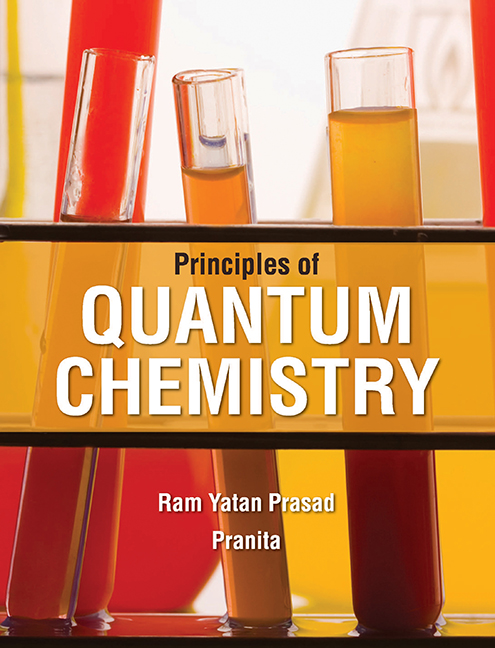Book contents
- Frontmatter
- Dedication
- Contents
- List of Figures
- List of Tables
- Foreword
- Preface
- 1 Quantum Theory
- 2 Wave–Particle Duality
- 3 Mathematical Techniques
- 4 Quantum Mechanical Operators
- 5 Postulates of Quantum Mechanics
- 6 The Schrödinger Equation
- 7 Playing with the Schrödinger Equation
- 8 Hydrogen Atom
- 9 Approximate Methods
- 10 Diatomic Molecules
- 11 Multi-electronic Systems
- 12 Polyatomic Molecules
- 13 Hückel Molecular Orbital Theory/Method
- 14 Density Functional Theory
- Glossary
- Appendix I
- Appendix II
- Appendix III
- Model Question Papers
- Index
14 - Density Functional Theory
Published online by Cambridge University Press: 02 December 2022
- Frontmatter
- Dedication
- Contents
- List of Figures
- List of Tables
- Foreword
- Preface
- 1 Quantum Theory
- 2 Wave–Particle Duality
- 3 Mathematical Techniques
- 4 Quantum Mechanical Operators
- 5 Postulates of Quantum Mechanics
- 6 The Schrödinger Equation
- 7 Playing with the Schrödinger Equation
- 8 Hydrogen Atom
- 9 Approximate Methods
- 10 Diatomic Molecules
- 11 Multi-electronic Systems
- 12 Polyatomic Molecules
- 13 Hückel Molecular Orbital Theory/Method
- 14 Density Functional Theory
- Glossary
- Appendix I
- Appendix II
- Appendix III
- Model Question Papers
- Index
Summary
Density functional theory (DFT) is one of the tools of computational chemistry. The density functional calculations are often said to be DFT calculations. It is just like abinitio and semi-empirical calculations based on the Schröodinger equation. It must be kept in mind that DFT does not compute a wave function but it directly gives a method to obtain the electron distribution or electron density function. Therefore, it may be said that the DFT is not based on the wave function, but it is based on the electron density or charge density or electron density function. It is represented or designated by p(x, y, z). The fact is that it is probability per unit volume, which is expressed as p(x, y, z) where P is the probability of finding an electron in a volume element dx . dy . dz. Note that p(x, y, z) is purely a number. It will be clear from the following representation:
The unit of p can be logically expressed as Vol−1. Therefore, p can be mathematically represented by
But for closed shell molecules ni = 2
We have used the words function and functional above. So we shall explain these two mathematical words one by one.
Function
A quantity 0y0 is said to be a function of another quantity 0x0, written as y = f (x), if a change in one produces a change in the other. Thus, in the statement y = 3x2 +5x, i.e., f (x) = 3x2 +5x, y is a function of x and a change in the value of x produces a change in the value of y. If x = 1, then f (1) = 3 ×12 +5 ×1 = 8, if x = 2, then f (2) = 3 ×22 +5 ×2 = 22. Thus, it is clear that the value of ‘y’ is dependent on the value of x.
The function can also be defined in the following manner:
A function f (x) is a mathematical rule, which connects a number with every value of x for which the function f is defined. For example, the function f (x) = x3 +1 connects the number 9 with x = 2, i.e., when we put x = 2, f (2) = 9; similarly, for x = 3 f (3) = (3)2+1 = 28.
Information
- Type
- Chapter
- Information
- Principles of Quantum Chemistry , pp. 733 - 750Publisher: Foundation BooksPrint publication year: 2014
